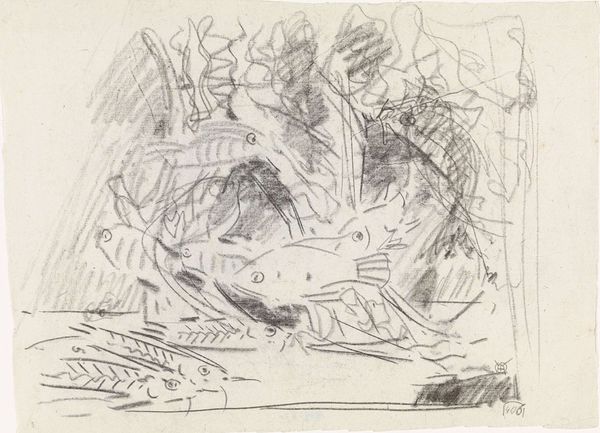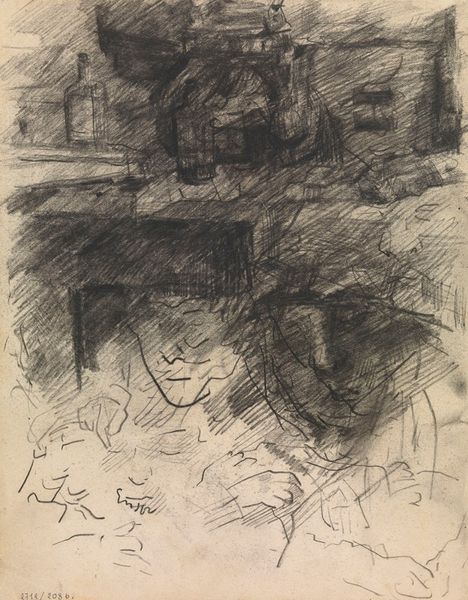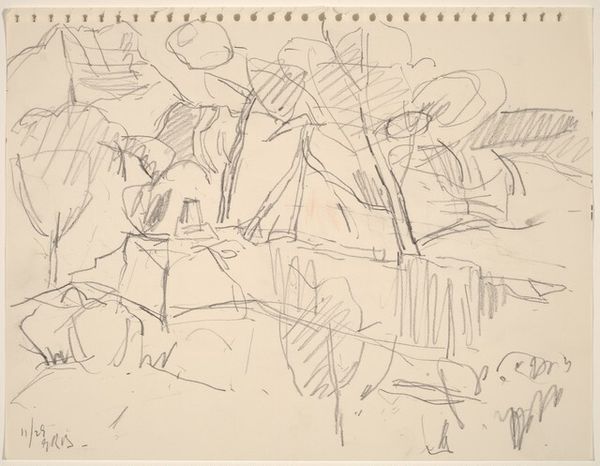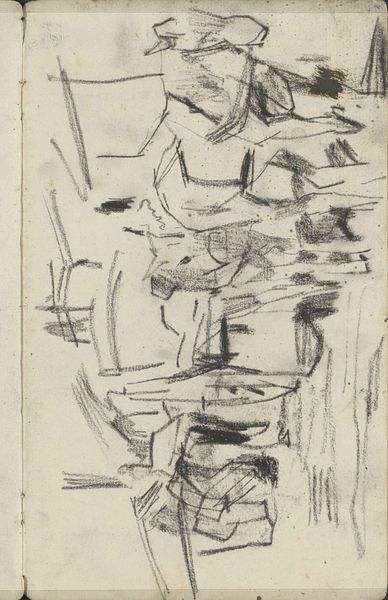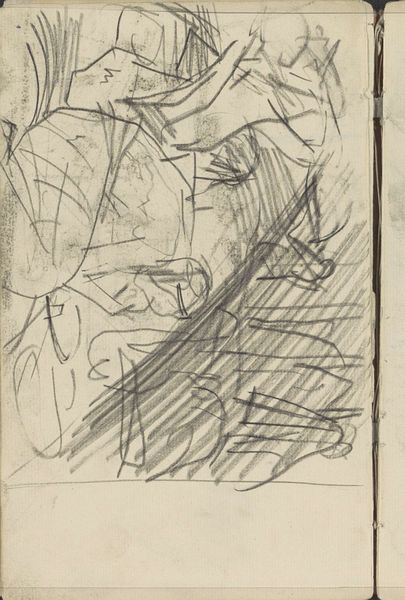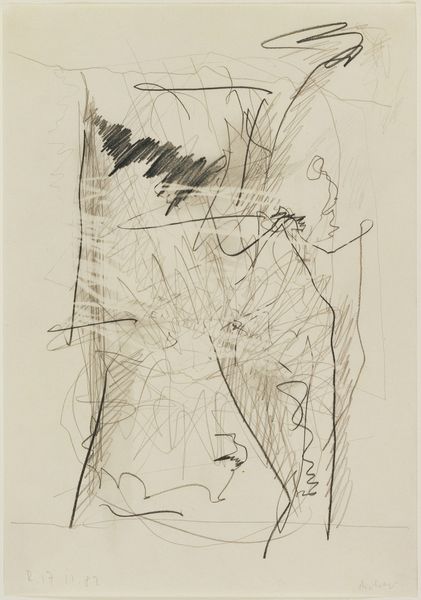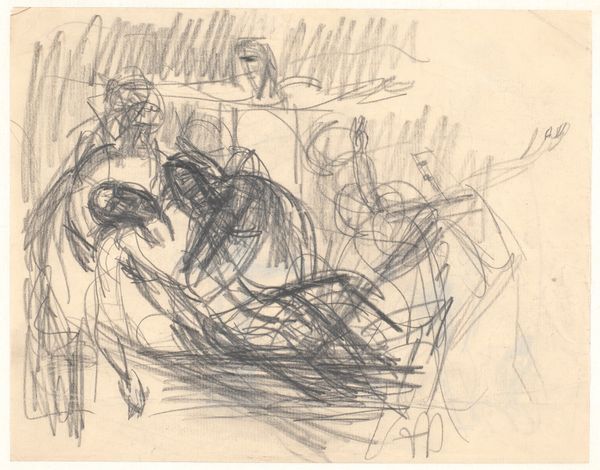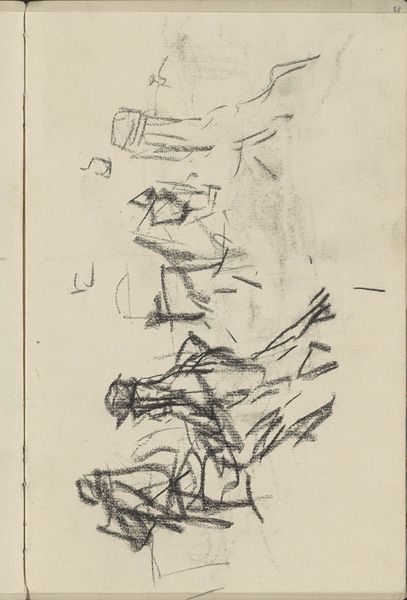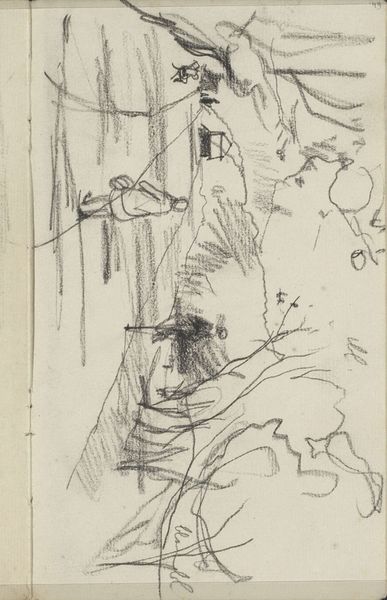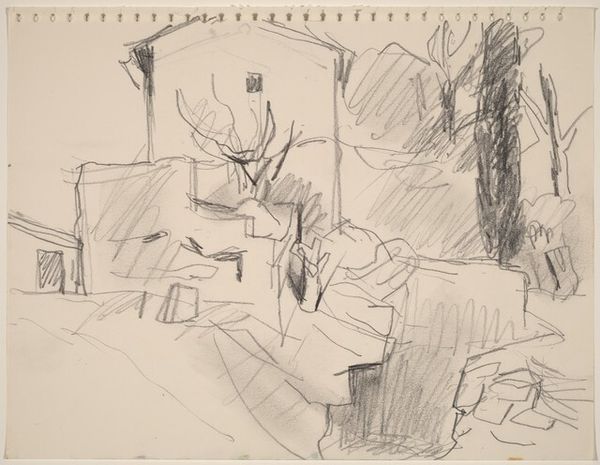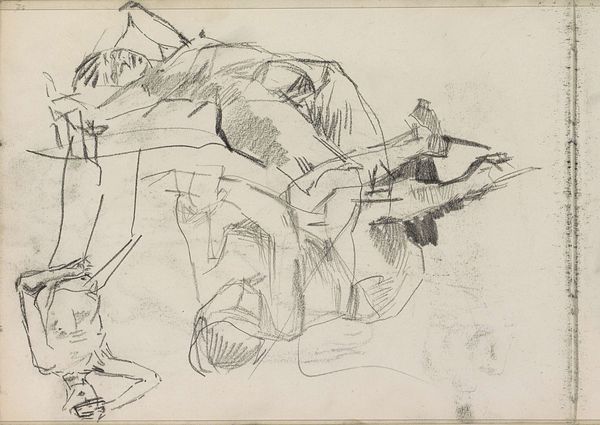
drawing, print, etching
#
portrait
#
drawing
# print
#
etching
#
figuration
#
line
Dimensions: plate: 25.4 x 20.2 cm (10 x 7 15/16 in.) sheet: 38.9 x 32.4 cm (15 5/16 x 12 3/4 in.)
Copyright: National Gallery of Art: CC0 1.0
Curator: Let's take a look at Frank Auerbach’s “Ruth (II),” an etching from 1994. What are your first thoughts? Editor: Immediate reaction? Nervous energy. It feels like a snapshot of a fleeting moment, the frantic lines almost vibrating. The medium really enhances that raw, unsettled feeling. Curator: Absolutely. Auerbach's work, especially his portraits, is deeply rooted in post-war London’s anxiety and reconstruction, both physically and psychologically. “Ruth (II)” exemplifies his long-term engagement with specific models—the act of repeatedly portraying them becomes a means of exploring identity. We should think about his female sitters. Do they reflect particular gender roles? Editor: Interesting. But looking closely, you see the etching process laid bare—the lines are everything. There is very little modeling, tone or depth; it seems Auerbach wants the viewer to see the labor of the printing and mark-making. He creates this almost aggressive materiality with stark marks against the plainness of the white of the page. It becomes a document of process more than likeness, maybe? Curator: Perhaps, yet one can’t deny the very palpable presence of the figure; that speaks of something more than process, I’d argue. Auerbach has lived, and painted, within the same very specific district of London for decades, giving the women he depicts a strong sense of locality. In this context, is the image specifically of a female body or could the gender presentation become immaterial, just one facet of "Ruth's" identity in the post-war British landscape? Editor: Identity definitely comes through here, but more as a result of the material manipulation rather than specific representation. The density of marks around her face suggest both interiority and something in danger of collapsing in on itself. Consider how the process conveys meaning in this piece—etching allows for intense detail but also fragility. It almost echoes the social precarity that defines many depictions of the individual throughout the late 20th Century. The work speaks not only about the experience of the individual, but of those experiences through process-driven construction and reconstruction of images. Curator: It does highlight the idea of reconstruction as construction. That’s so evocative, thank you. Editor: Thank you for illuminating Ruth's identity within this moment.
Comments
No comments
Be the first to comment and join the conversation on the ultimate creative platform.

